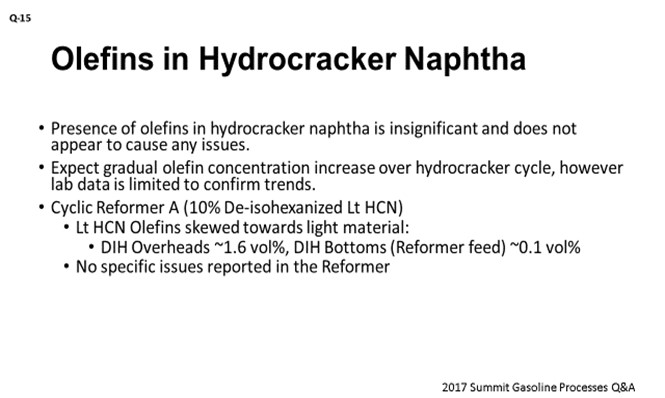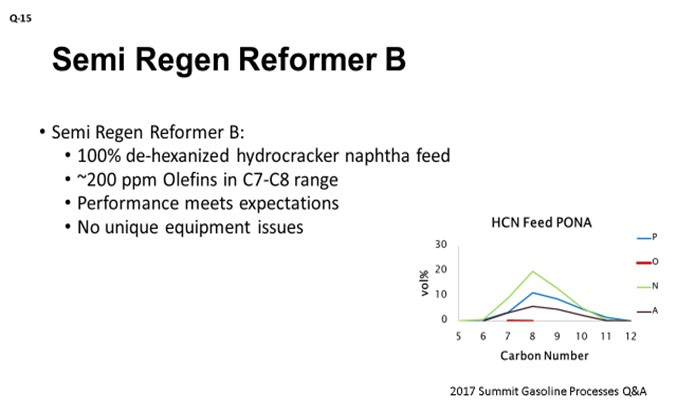Question 15: For units that feed hydrocracked naphtha directly to the reforming unit, what is the typical concentration of olefins in the feed? How does the concentration change over the hydrocracker catalyst cycle, and what are the impacts to the operation of the reformer?
SABITOV (Phillips 66)
Regardless of the intent of this question, such as concerns with potentially fouling of the equipment, I can respond that presence of olefins in hydrocracker naphtha is insignificant and does not appear to cause any issues in our reformers. From a general process standpoint, I can say that we expect gradual olefin concentration increase over hydrocracker cycle as reactor temperatures are increased; however, lab data is limited to confirm trends.
Going back to our two reforming units I mentioned in the previous question: I just want to remind you that Cyclic Reformer A is processing about 10% of deisohexanized light hydrocracker naphtha coming from hydrocracker naphtha DIH column. The data seems to indicate that olefins are more skewed towards the light portion of the hydrocracker naphtha where we see about 1.6 vol% olefins in DIH overheads and about 0.1 vol% olefins in DIH bottoms, which is mixed with the rest of the reformer feed. There are no specific issues reported in the reformer.

As mentioned, the second semi-regen – Reformer B – is running with 100% dehexanized hydrocracker naphtha feed. This stream contains trace olefin levels of about 200 ppm in the C7 to C8 carbon range. From a catalyst performance standpoint, this unit meets expectations. We also do not see any unique equipment issues in this unit. The same refinery operates another reformer running on straight-run naphtha, which gives us a good benchmarking point.

KOLAPO ALADE-LAMBO (Honeywell UOP)
Olefins are expected to be saturated in the first bed of the hydrocracking unit. At start-of-run conditions, olefins are not expected to be found in hydrocracked naphtha. At end-of-run conditions, the olefins may increase a very small amount, but not to levels that will impact the feed to the Honeywell UOP Platforming™ unit nor the performance of the Platforming catalyst.